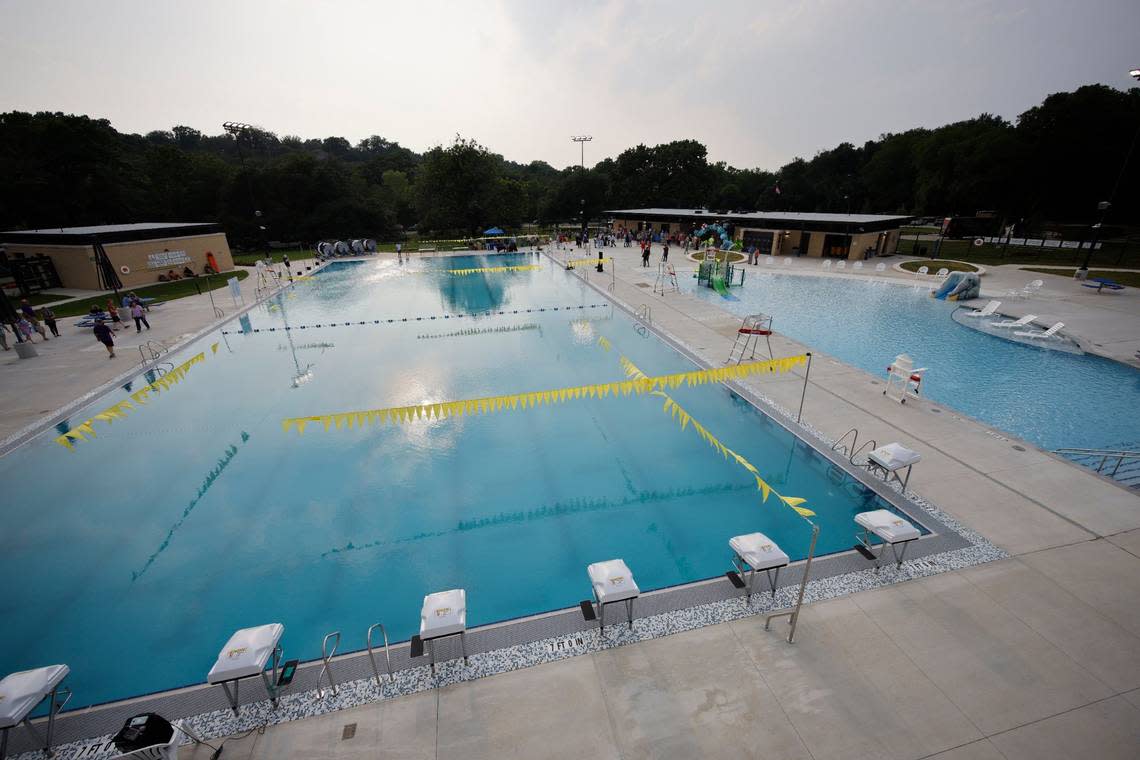From Forest Park Pool to remarkable people, columnist has shared stories of Fort Worth
The Forest Park Pool, a summertime oasis redesigned twice in its 100-year history, was on the budgetary chopping block in 2021, destined to be downsized to a kiddie pool with four short lanes, a water slide and a splash pad.
What could I, a lifelong swimmer whose Masters Team practiced at sunrise, do to keep this aquatic treasure from losing its Olympic-size, 50-meter lanes?
Several months earlier, I had begun writing monthly local history columns for the Star-Telegram. My next story was slated for Labor Day weekend. Instinctively, I knew what to do. I wrote a 900-word column about the hallowed pool and its past. It ended with the words, “Labor Day 2021 may be the last chance for a dip into Fort Worth’s swimming history.”
It wasn’t long before TV cameras were poolside. A grassroots movement to upgrade, rather than dumb-down, the aquatic site ballooned. Public meetings followed. An online petition gathered 1,472 signatures (and pithy remarks) sent to the email boxes of park personnel and city council members.
Two months ago, two state-of-the-art pools — one for serious swimmers and the other for beginners — opened with racing lanes, backstroke flags, two water slides, well-lit locker rooms, picnic tables and attractive landscaping. Families lined up to enter.

There is still power in local journalism to spark significant change.
Before the internet became pervasive, I had spent a decade reporting full-time for the Star-Telegram. In 1997, I left the paper to focus on books, anthologies, academic journals and archival work. During the COVID-19 lockdown, I began submitting Sunday columns and signed a contract to write once every five weeks. It has been flattering to hear readers’ compliments and fun to dispute their complaints.
Nonetheless, at the age of 77, I am slowing down. I will no longer be writing once a month, just once in a while. It has been a privilege to fill this prominent space in the local section the past three-and-a-half years and to write 40 columns about whatever I chose.
When the pipes burst at my house during January’s deep freeze, I turned my domestic disaster into a column recounting paralyzing deep freezes over the past century. The research proved cathartic. It put my burst pipes into historic context.
When a friend asked, “What’s the story on that eyesore at 411 W. Lancaster Avenue?” I looked into it. The eight-story Texas & Pacific Warehouse, an Art Deco landmark owned by a Dallas company, is vacant, crumbling, and deteriorating in place.
Although the Dallas Morning News reprinted my column verbatim and the Fort Worth Report ran follow-up stories, little has happened. Despite the power of the press, demolition by neglect continues.
Half of my columns stemmed from my work as volunteer director of the Fort Worth Jewish Archives. One article profiled Carshon’s Deli, the kosher-style eatery that dates to 1925. Another column focused on Rabbi Robert Schur, the city’s first white clergyman to march for Black civil rights. A retired librarian asked me to write about the annual “Jewish women’s book fair” that from 1958 to 1997 recycled paperbacks and hardcovers. Readers — among them Pulitzer Prize winner Larry McMurtry — drove great distances for these bookshelf bargains.
Another subscriber suggested a column about her aunt, Erma Duffy Lewis, who in 1972 launched the Sojourner Truth Players, the region’s first established Black theatrical troupe. That column led to an assignment from the Handbook of Texas Online for a more detailed profile and a bibliography. Another column that caught the eye of the Handbook editors profiled B. Max Mehl, the numismatist on Magnolia Avenue who popularized coin collecting worldwide.
Earlier this year, a law partner of the late Jerry Murad shared an emotional experience. He had once asked Murad, a World War II veteran, to describe his worst wartime encounter. Murad teared up as he recalled the day his artillery unit liberated a concentration camp of starving, emaciated Jewish inmates. “They looked like skeletons.”
Research into the Second World War continues to uncover surprising human-interest stories. My columns about teenage Holocaust survivors who grew up in Fort Worth always elicited memories from classmates. When Harry Pila, a “hidden” wartime child, who graduated from McLean and Paschal, published his memoir in 2022, it included engaging observations about Cowtown.
Erika Meyer, another Nazi-era immigrant and McLean graduate, saved her family’s letters from Germany. Her son donated them to an archive in New York, and an award-winning memoirist is writing Erika’s biography and will visit Fort Worth to conduct research in a year or two.
Harry Pila and Erika Meyer encountered positive, welcoming families in Cowtown.
That was not the case for two Holocaust sisters who arrived at the Texas & Pacific Station in 1941 and received mega publicity. They had a negative experience and left Fort Worth in less than a year. Where did they disappear to? Stay tuned. I am still pursuing their story. The next time I visit this space, the sisters will likely be the subject.
Hollace Ava Weiner, an archivist, author, and historian, is director of the Fort Worth Jewish Archives.
